Starting Something New: Recent Contemporary Acquisitions and Gifts

Visitors consider the art in the Mead’s current show “Starting Something New: Recent Contemporary Acquisitions and Gifts.” (September 10, 2019 - July 26, 2020) — Note the line of painted baseball bats at back. This artwork is Turbulence II, by the Guatemalan artist Dario Escobar. Escobar has also created art from pool cues and soccer balls.
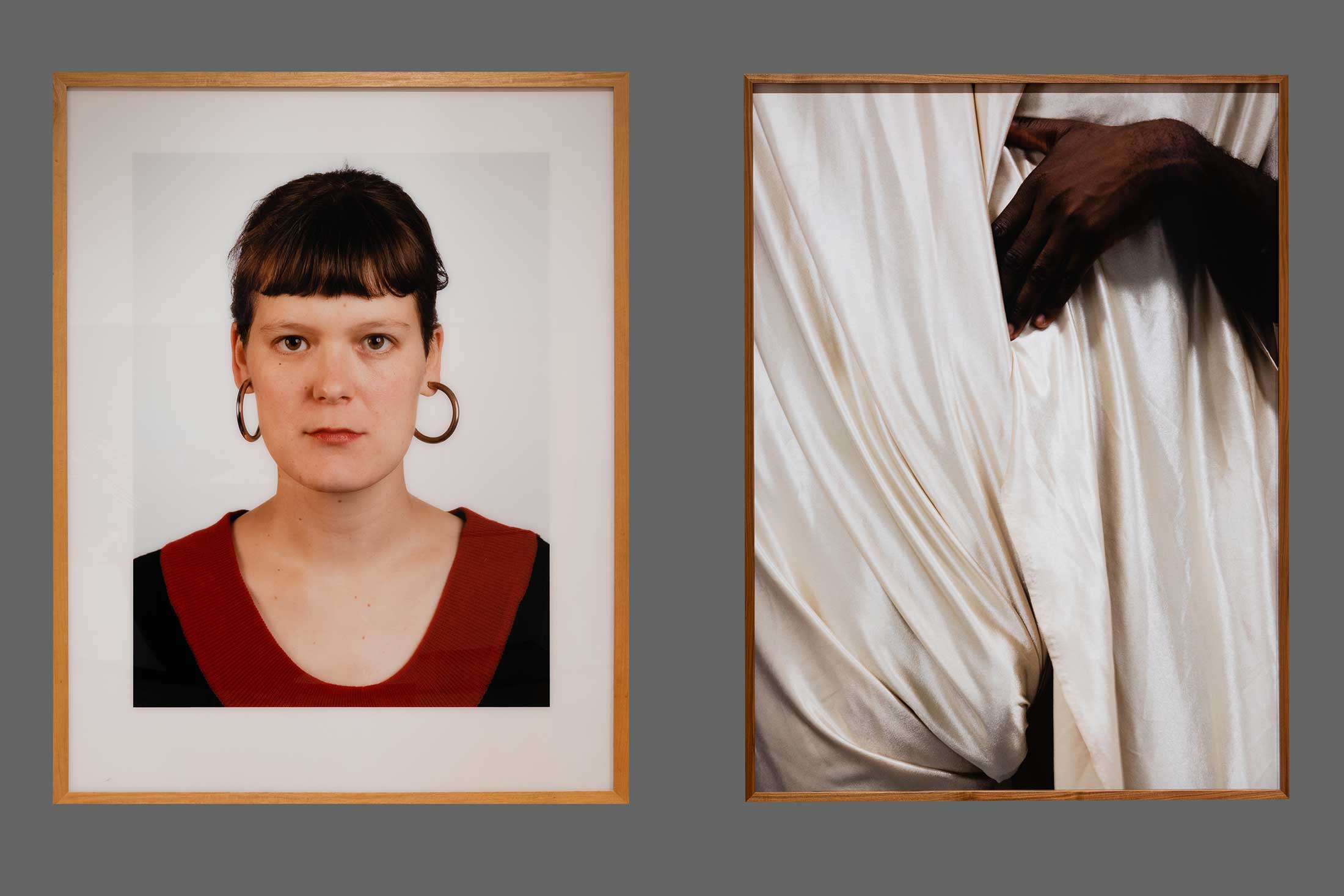
Left: Portrait (Elke Dende), 1988. Thomas Ruff. This chromogenic print portrait by Ruff, a German artist born in 1958, is part of a portrait series of fellow students and friends that he began in 1981, using a large-format camera. Says Little: “The only instruction for the sitter that Ruff had was that they didn't express themselves. He felt that this underscored that a photograph doesn't tell you about the personality of the person.”
Right: Draping, 2017. Paul Mpagi Sepuya. Sepuya, an American artist born in 1982, often uses himself as the subject of his photographs. To an extent, says Little, Sepuya’s art “is about him constructing his own identity and it’s also about him really looking at the history of photography and portraiture.”
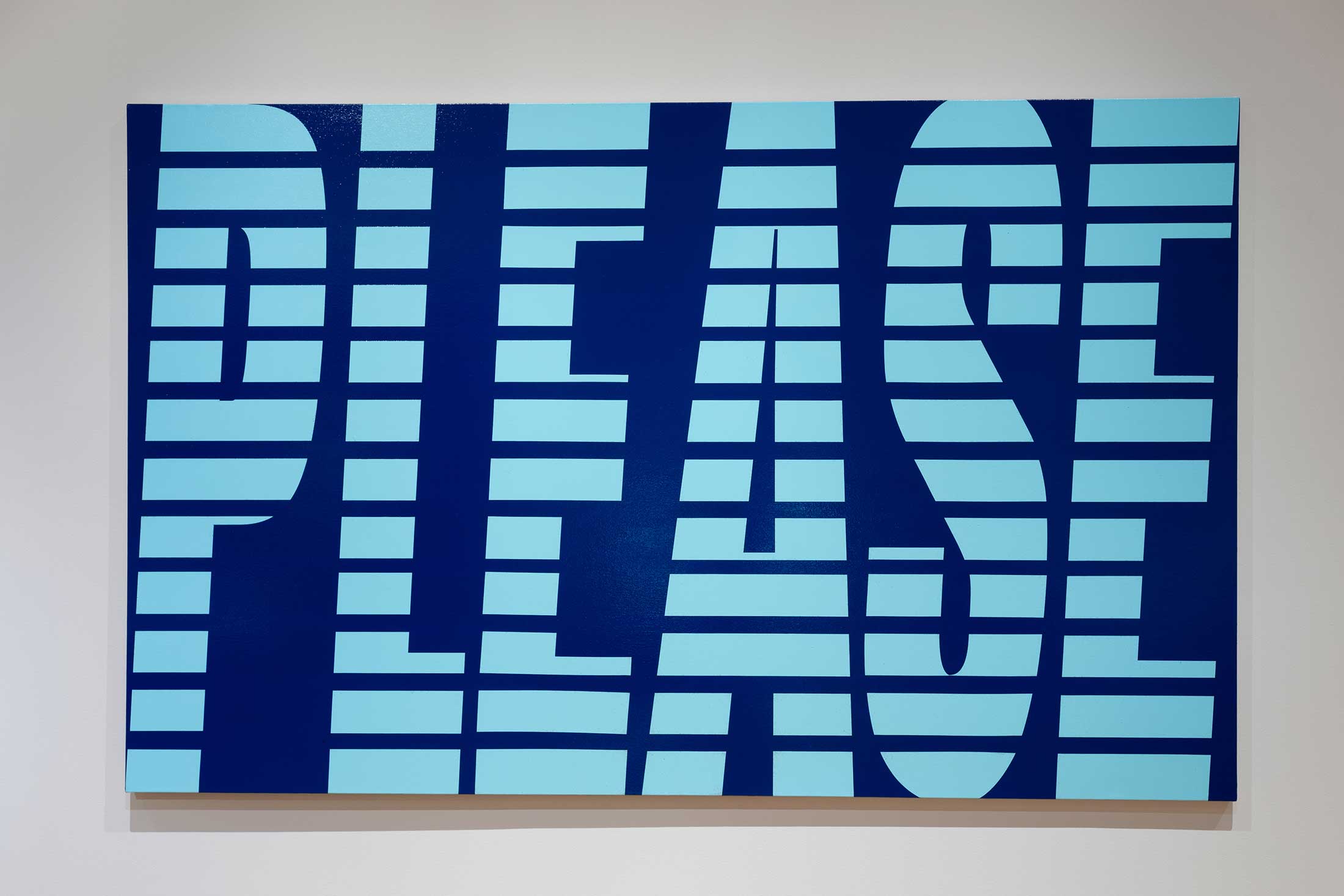
Please, 1997. Sarah Morris. Morris, an American born in England in 1967, did a series of one-word paintings in the 1990s based on headlines from New York newspapers. The series also includes works called Guilty, Liar, Nothing, Girls, Never, Hell, and Sorry. “There's a sense of movement in this, urgency,” says Little. “The way the letters are slanted. Like we're looking at lights with the police coming.”
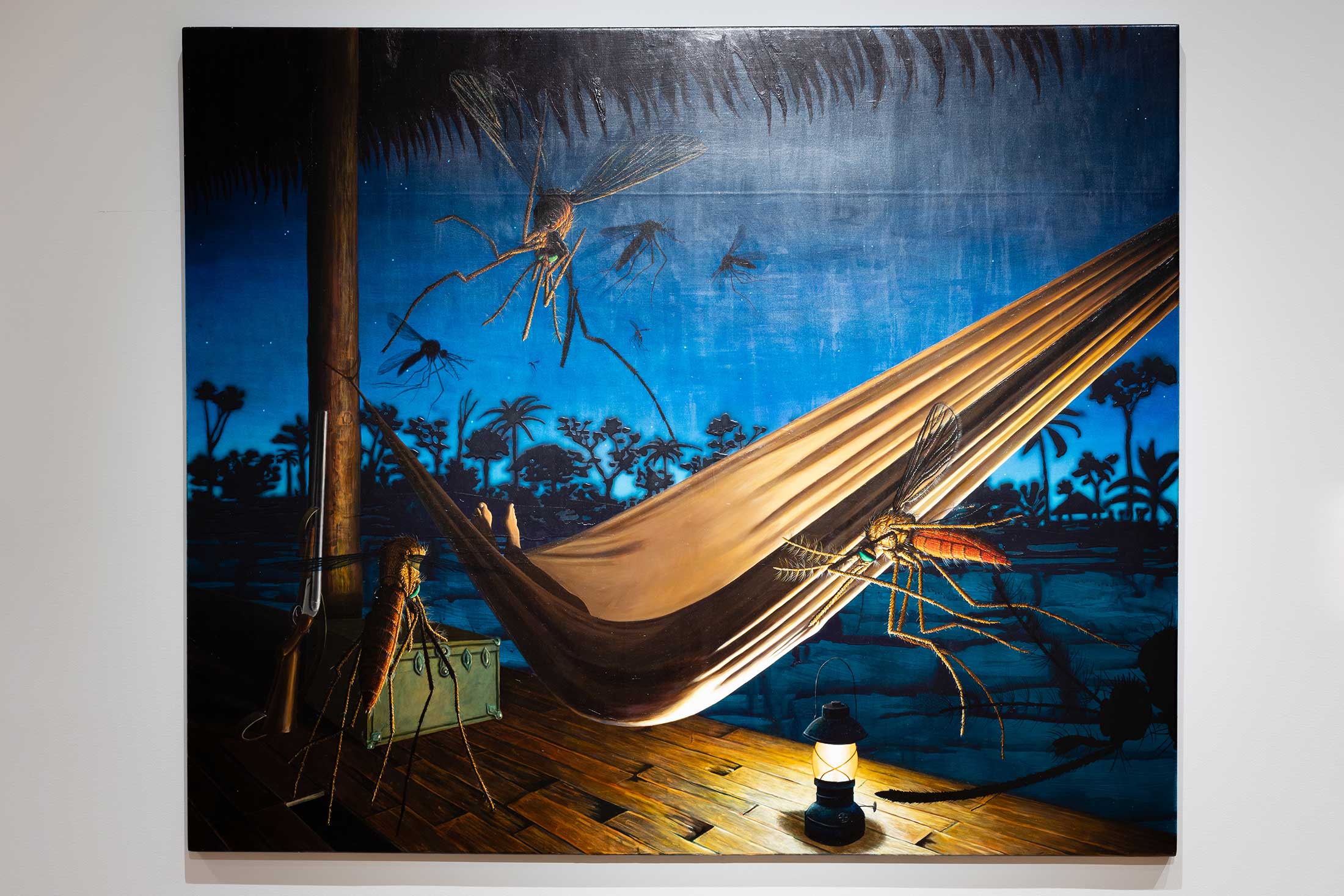
The Hammock, 2000. Alexis Rockman. This oil on wood painting is both ominous and comic: Rockman is known for creating apocalyptic images. When Little and Rockman talked about the painting for the show, Rockman explained that usually, he goes to the internet to find images of the creatures he wants to paint hyper-realistically. But, in 2000, when he painted The Hammock, there were few good ones online. So Rockman went to a research lab to take photos of the mosquitoes himself.

Greenbook, Mississippi (1940). 2018. Kapwani Kiwanga. Kiwanga, born in 1978, is a Canadian artist (active in France). This work is a manipulated facsimile of a page from Victor H. Green’s The Negro Motorist Green Book, an annual publication that Green produced between 1936 and 1966 to help black travelers find safe restaurants, gas stations and hotels on the road.

Good with Houseplants, 2003. Sarah Braman. Braman, born 1970, splits her time between New York and Amherst. This playful sculpture, made of colored plexiglass, acrylic paint and sticker paper, is part of a series and somewhat resembles an amateur organic chemistry model. Abstraction “is always about something...what it is about is beyond the confines of language,” Braman has said. When she came to the Mead exhibit, she grabbed the sculpture and turned it around on its side (“You should have seen the shock on my face,” joked Little). She decided she liked the pedestal and let the piece stay as is.

Decant (White) No. 2. 2011. Analia Saban. Saban works in Los Angeles and New York and was born in 1980 in Buenos Aires. In a 2017 Flaunt article, she said: “A lot of what I’m interested in has to do with history and looking back, saying, ‘Ok, what can I do with this paint recipe that was completely forgotten about? What if I revisit it now?’” Decant (White) uses encaustic paint on canvas.
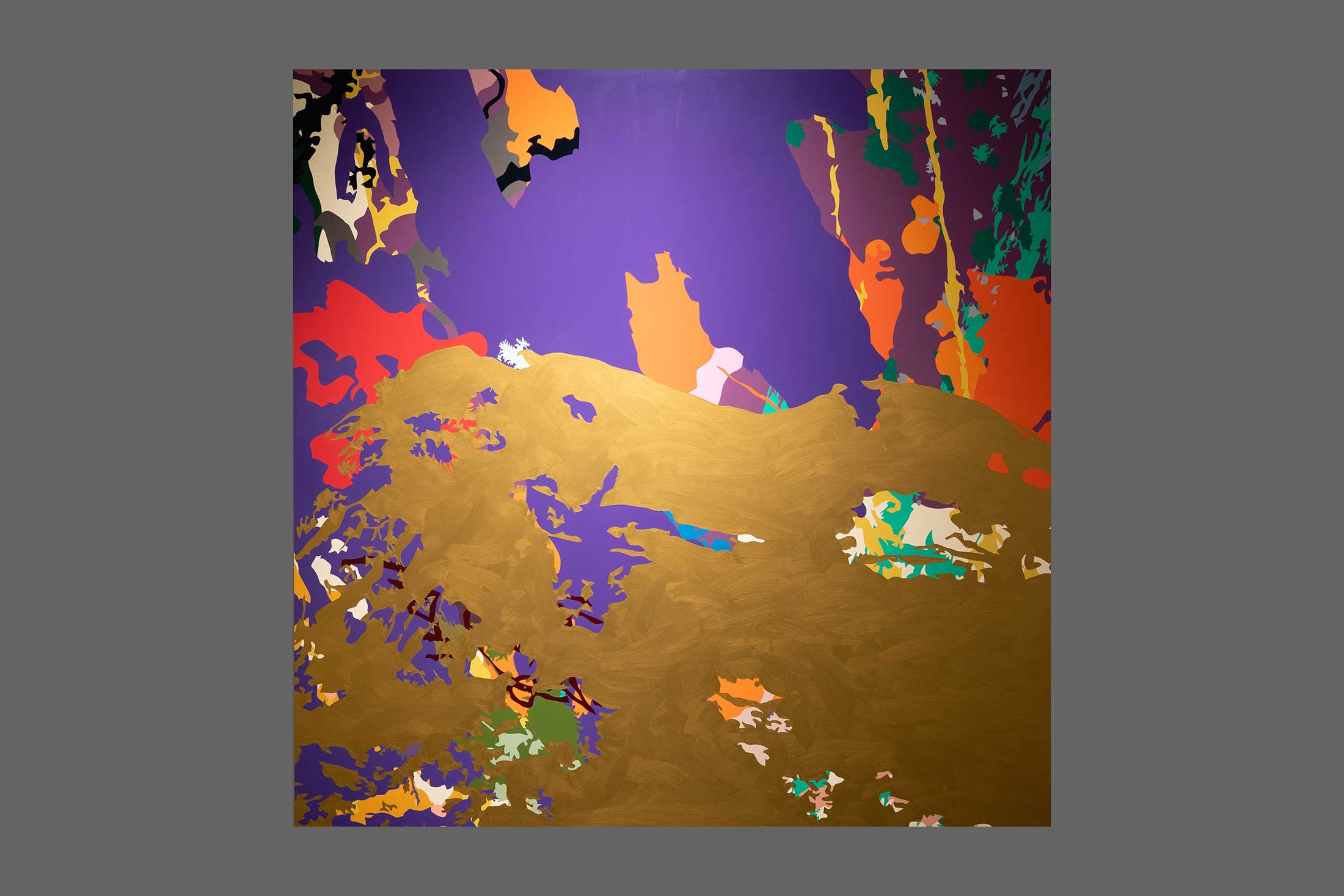
CgONG!, 2002. Ingrid Calame. “If you think about early Abstract Expressionism, it's about the heroic, a sense of the infinite, all of those grandiose qualities,” says Little. “But here Calame has made art that’s inspired by a stain she found. It’s organic, it’s about the changeability, these incredible shapes and forms. It’s a completely different sensibility. And that fantastic palette!” Calame is an American artist, born in 1965, and she used enamel paint on aluminum for this work.
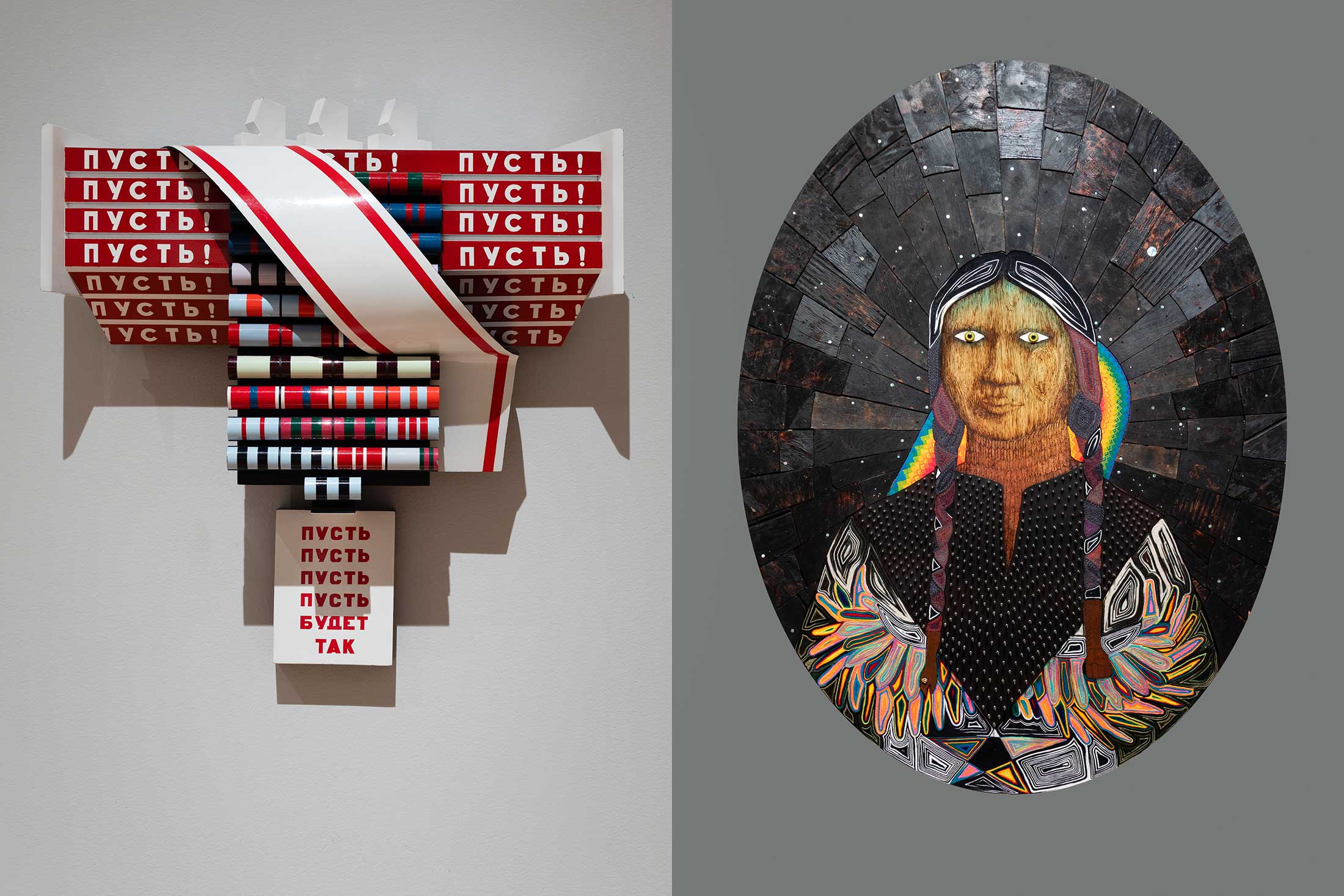
Left: Small Three Headed Totem, 1989. Boris Orlov. Orlov, born in 1941 in Russia, was one of the originators of the Sots Art movement, the Soviet version of Pop art. This work slyly critiques the Soviet military. The artist presents silhouettes of three tiny heads atop flashy rows of official ribbons and medals, neatly painted in national colors of red and white.
Right: Sacajawea (American Martyr Series), 2005. Matthew Day Jackson. An American artist born in 1974, Jackson here presents the famous daughter of a Shoshone chief, who was kidnapped at 12, sold to a Quebecois trapper and later became an interpreter for Lewis and Clark. Said the New York Times of Jackson’s work: “At nearly every turn, political concerns are countered by extravagant details that verge on the hallucinatory.” Sacajawea is created from scorched wood, woodburned drawing, sculpey, mother of pearl, abalone, yarn, epoxy, tooled leather, skull bead.
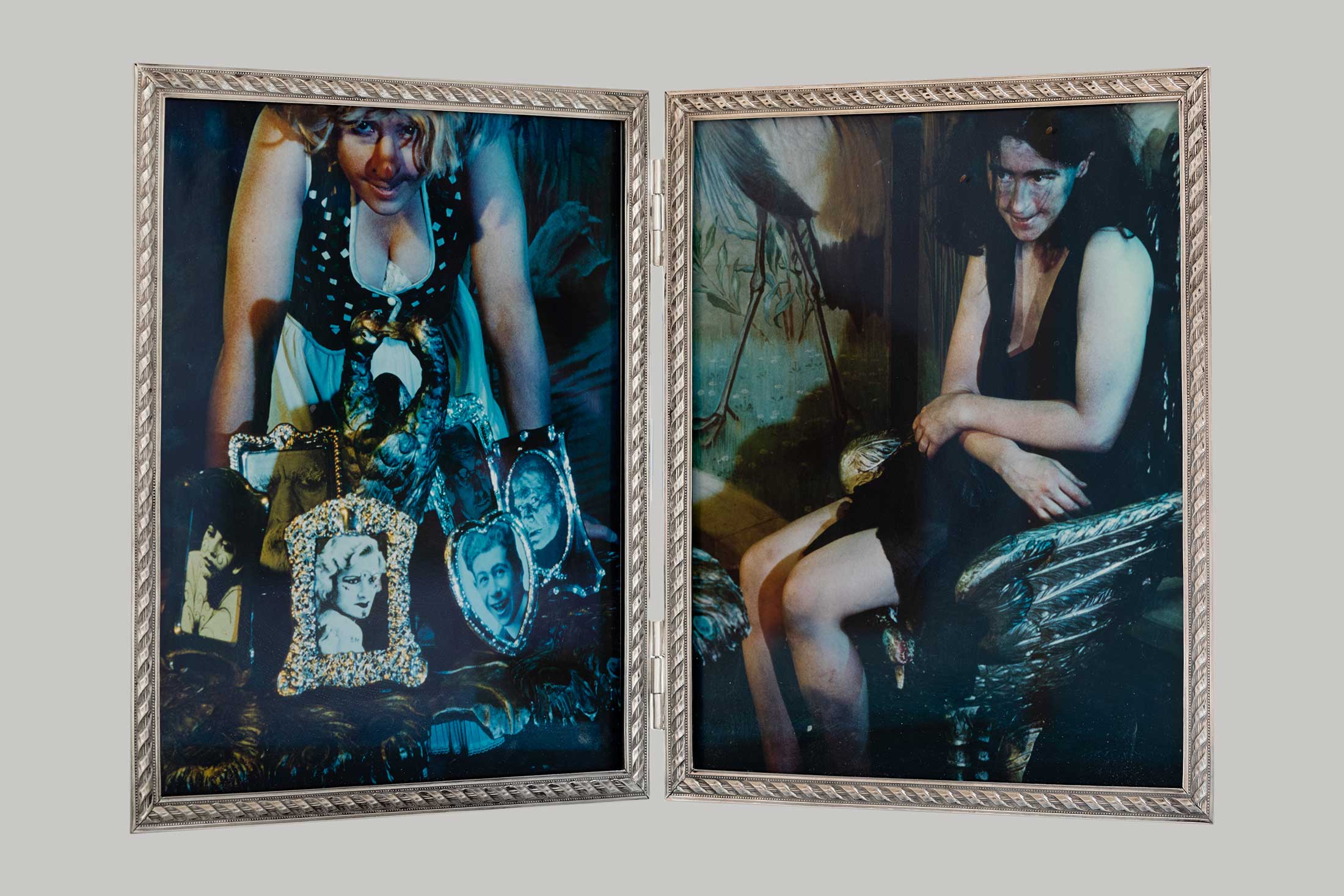
Untitled, 1985–99. Cindy Sherman. Parody, voyeurism, the male gaze: these inform Sherman’s art and this chromogenic print (edition of 25) features the artist who, for forty-plus years, has photographed herself in the guise of various female characters, often drawn from Hollywood. Here, two costumed women—both Sherman—portray two personality types, the framed photos within offering visual commentary.
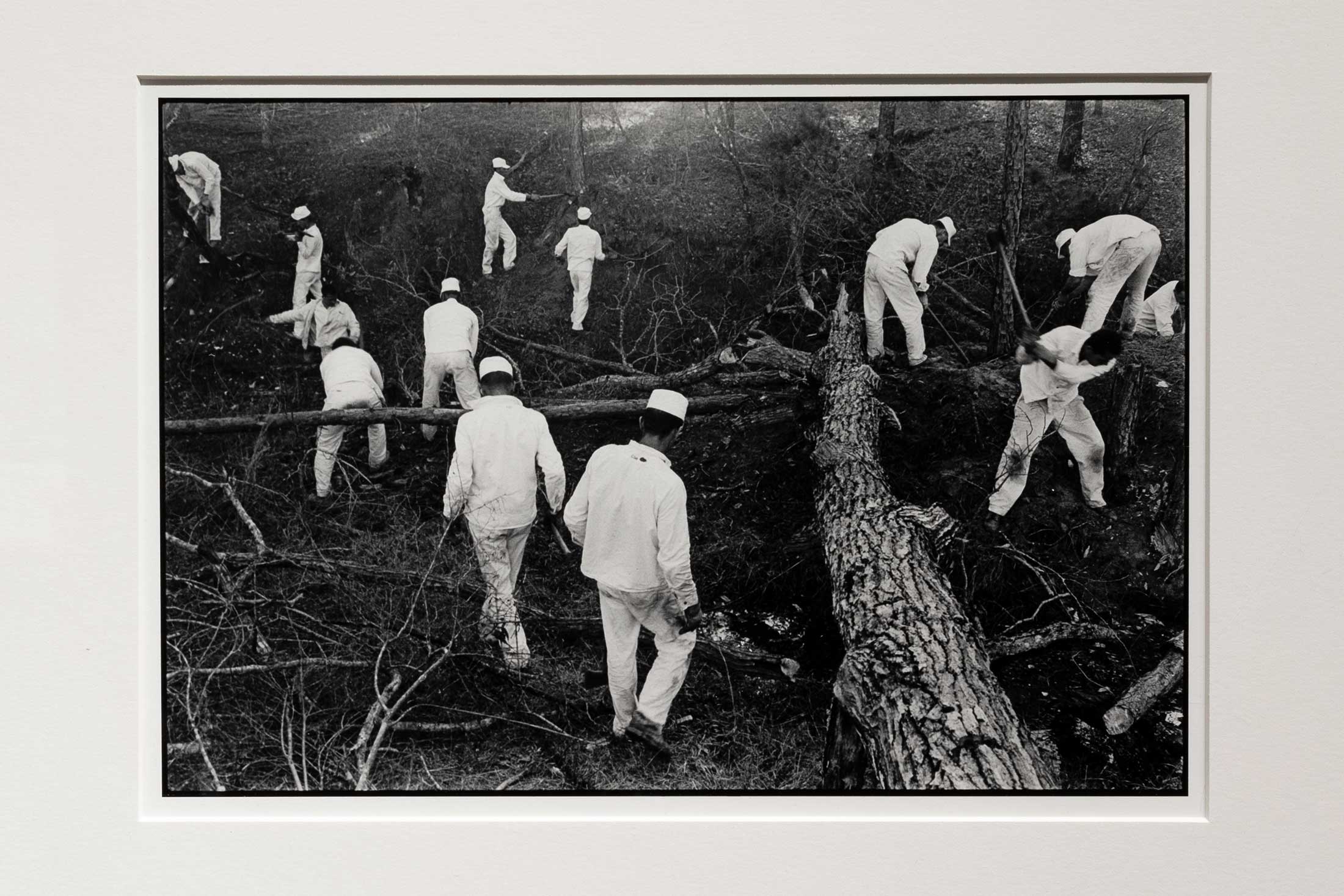
From Conversations with the Dead, 1967–1968. Danny Lyon. Lyon, who was born in Brooklyn in 1942, photographed six prisons in Texas in 1967 and 1968, having been given full access by the Texas Dept. of Corrections. The Mead show features 22 images from the book he published on the experience. “I’ve tried with whatever power I had to make this picture of imprisonment as distressing as it is in reality,” wrote Lyon. “The few times I doubted the wisdom of my attitude, I had only to visit someone in his cell to straighten out my mind.” This image is a gelatin silver print titled Clearing Land.
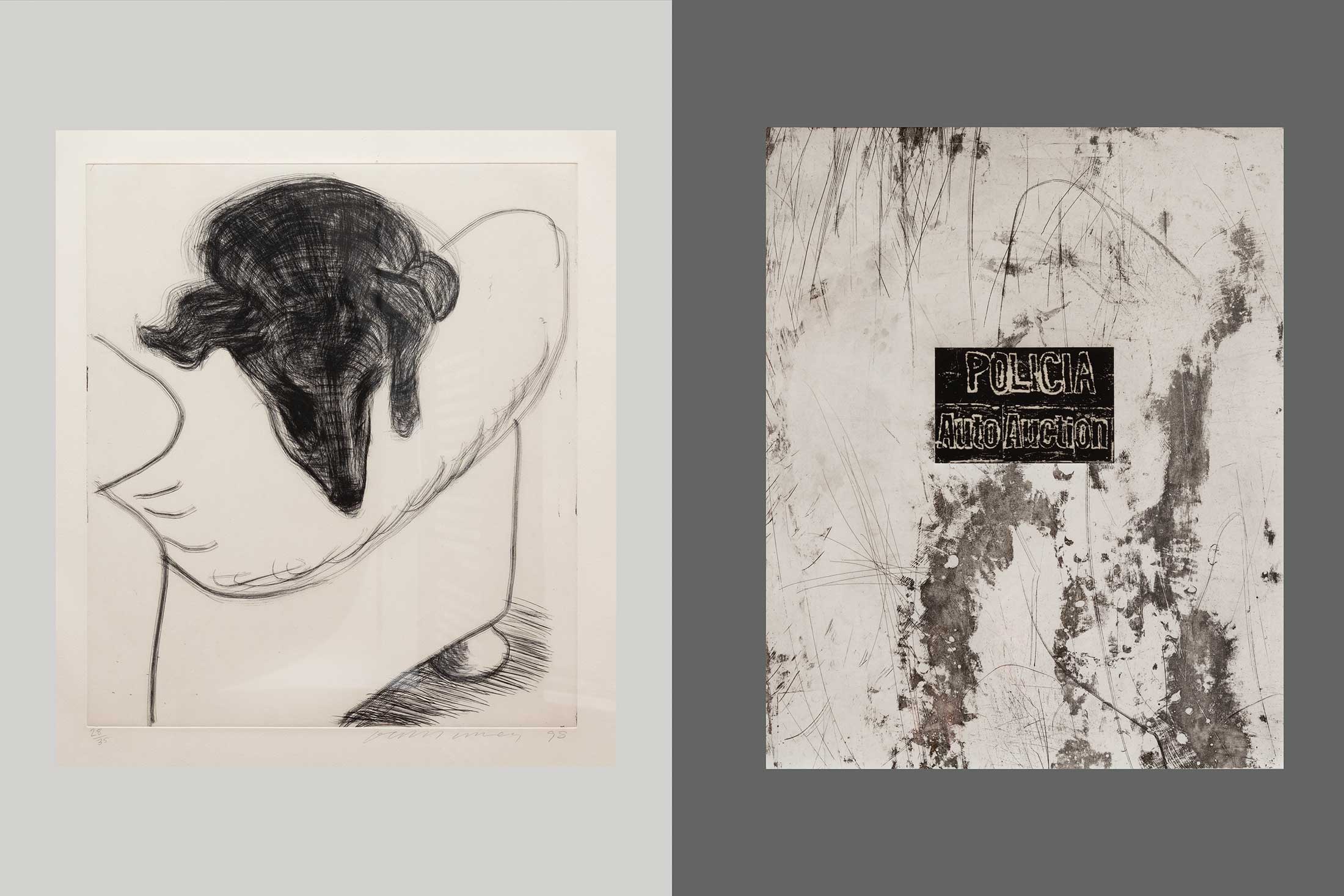
Left: Dog Etching No. 4, 1998. David Hockney. The famous British painter, born in 1937, has always loved dogs, especially dachshunds. Though better known for his sunny, bright paintings of California life, he has also done quiet, homey etchings (like this) and had them printed by master printers. At age 82, Hockney is still an active artist, experimenting with video in the past decade.
Right: Untitled, 2012. Los Angeles-based artist Mark Bradford was born in 1961 and received a MacArthur “Genius” Award in 2009. He is often inspired by the rough advertising signs posted on the telephone poles or laundromat windows on the L.A. streets, touting cash for houses, loan debt relief, foreclosure prevention and more. Untitled combines etching, photogravure and the print technique of Chine-collé to echo the DIY quality of these signs.
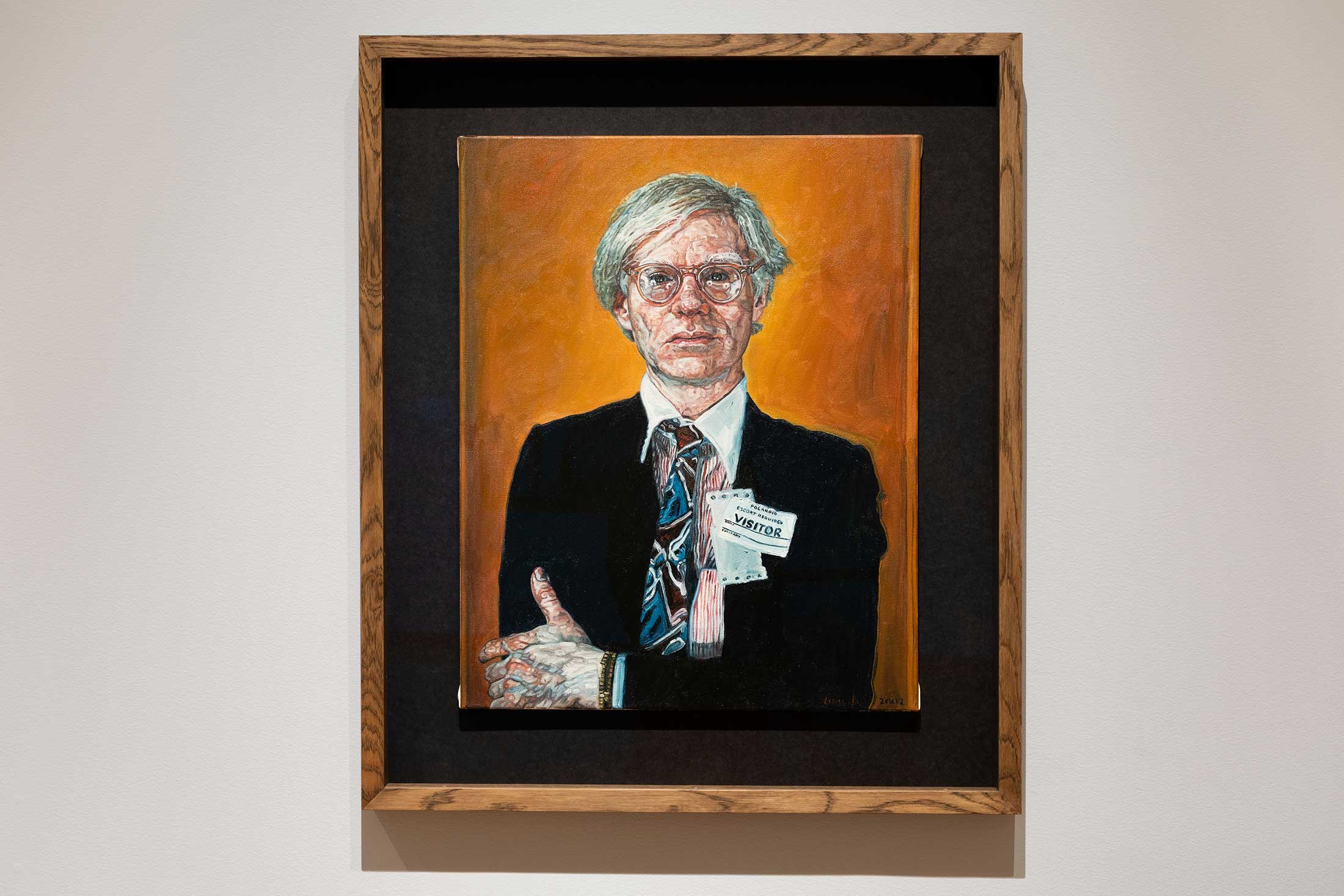
Untitled (Andy 1), 2002. Ulrich Lamsfuss. A German artist born in 1971, Lamsfuss takes for his subject the iconic artist Andy Warhol. Long before selfies and social media, Warhol grasped the impact of mass culture on society. So it’s apt that Lamsfuss based this painting on an image of Warhol that he found on the internet. “What I see is what you get,” to quote Lamsfuss, who scavenges mass media images which he then turns into oil-on-canvas paintings.